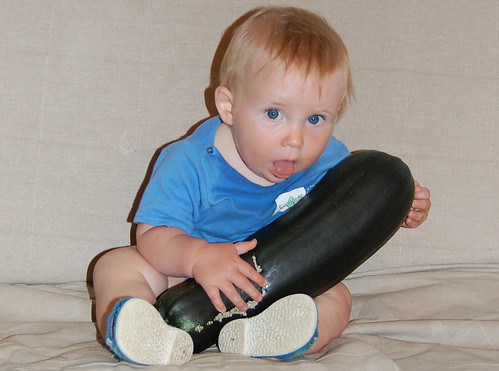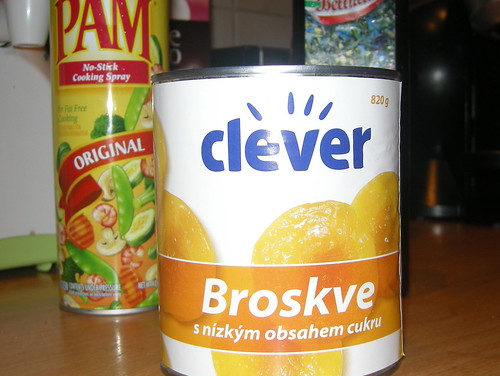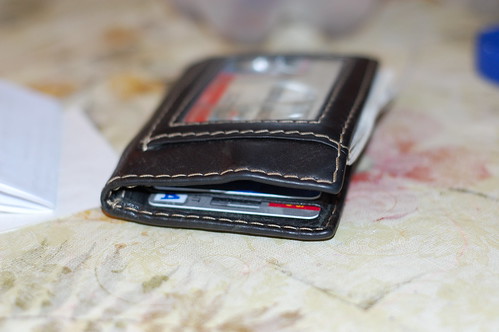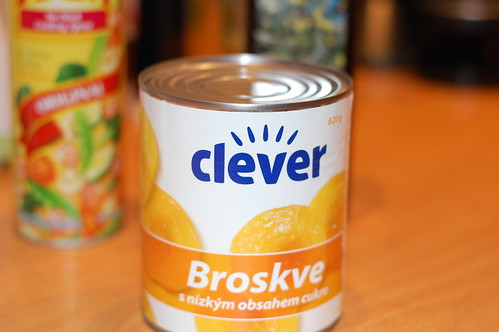
A little boy (my son Sam) with a big zucchini
Here in the Czech Republic, there is a well-known food blog by the name of Cuketka.cz (which means "little zucchini" in Czech, hence the title of this post). While it is undoubtedly most popular for the quality of the writing, one is also struck by the interesting photos, which are much better than the photos on the average blog. A good example can be seen in his post on Bakeshop Praha.
Cuketka hasn't written much about how he takes his photos, so I thought I'd write a quick post to explain how to take these kinds of "artsy" shots (product in focus, background out of focus). The main technique is to use a very shallow depth of field, which is something commonly seen in food magazines but impossible to pull off with most "point-and-shoot" cameras.
Quick answer: get a fast lens. Open it up all the way. Shoot photos.
What this means: Firstly, as I said above, you are not going to be very successful trying to shoot these kinds of photos with a "point-and-shoot" pocket camera. You just can't open the aperture wide enough. For example, here's a shot of some peaches that I took in my kitchen with a Nikon P5000, which is one of the more expensive pocket cameras on the market:

Not very appealing - the entire shot is in focus (which is normally a good thing, by the way), and it looks very clinical and lifeless (compare this to a food shot on Cuketka.cz). You can take very good photos with a pocket camera if you know what you are doing (I don't, really), but you are going to make your life a lot easier if you get a slightly better camera.
What you need to buy is a DSLR (Digital Single-Lens Reflex) camera. You don't need to break the bank to get a camera with interchangeable lenses - you can get a Nikon D40 for under $500 on Amazon.com. Your DSLR will usually come with a "kit lens" (the lens included with the camera), and this is the lens you would use for most "normal" shooting. But for shallow depth of field shots, you'll want to get a "faster" (lets more light in) lens than comes with the camera.
A 50mm f/1.8 lens will do nicely for this. You can get a Nikon Nikkor lens for about $110 in the U.S., and the equivalent lens for a Canon body is even cheaper. What this lens will allow you to do is open the aperture (the "pupil" of the lens) much wider, which will reduce the depth of field of the shot. Thus it will be very easy to have something 50cm away in focus, while objects 70cm away are out of focus. In the shot below, the Pepsi bottle is in sharp focus, while the table top only 15cm away is completely put of focus.

In fact, using a 50mm f/1.8 lens, you can reduce the depth of field to only a few centimeters. In the shot below, the stitching on the front of the wallet is in focus, but the driver's license on top is completely out of focus despite being only 3-4cm farther away. Using this technique, you could photograph a portrait wherein the person's face was in focus, but his nose was out of focus!

So, let's try the peaches shot again. All I did here was attach the 50mm lens, frame the shot (badly), and shoot. It's not going to win any awards, but it's a lot closer to what we want from a food shot than the photo above.

So, it's that easy. A DSLR and a fast lens, and you can be on your way to shooting photos like Cuketka (or Belcarnen, or Matesola, or GurmetKlub, etc.).
Postscript: there's another well-known food blogger in Prague, who I'm guessing is taking flash photos with a pocket camera for his reviews. Not as pretty as the shallow-depth-of-field shots, but they are in some ways more honest depictions of the food he was served. For example, in my "artsy" shot of the Pepsi bottle above, it almost looks like real food, and we know it is not.
No comments:
Post a Comment